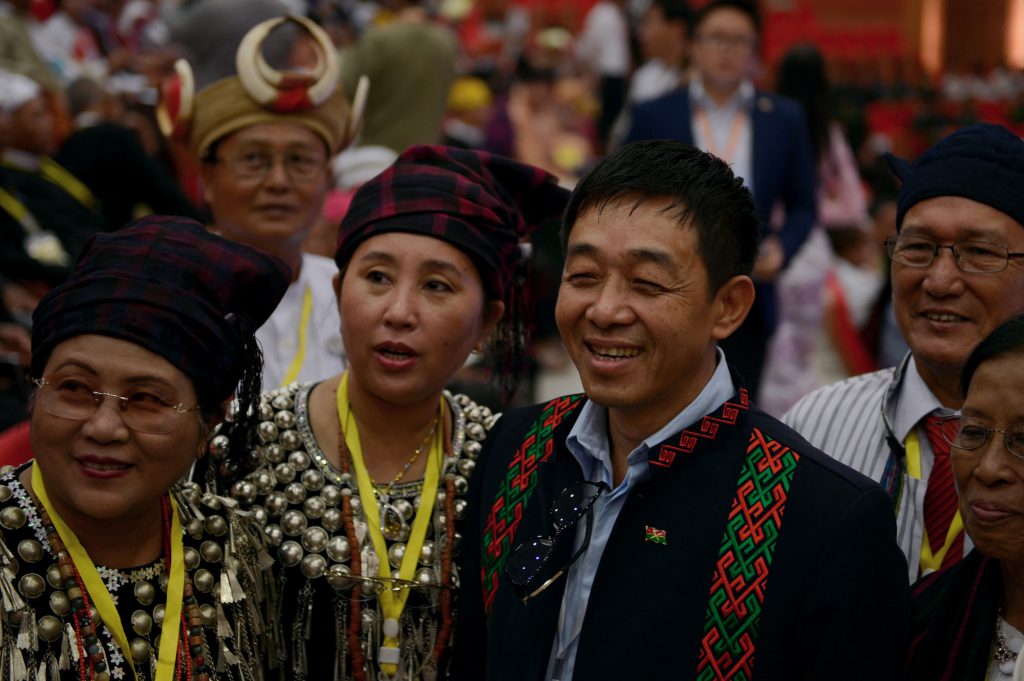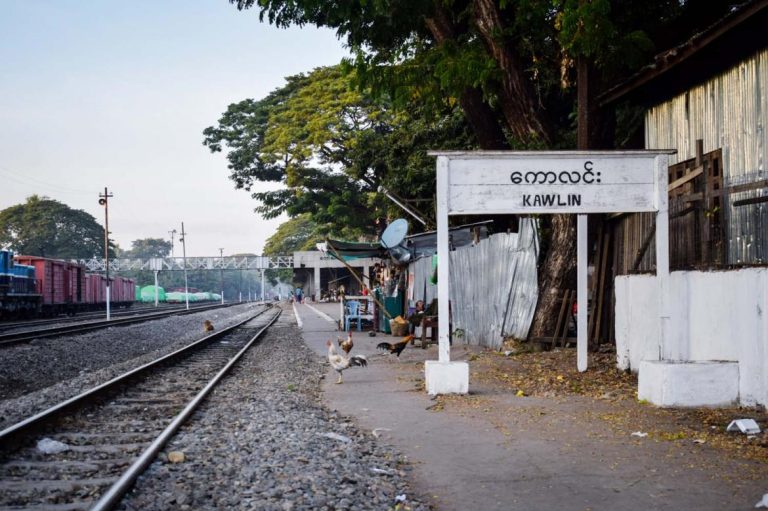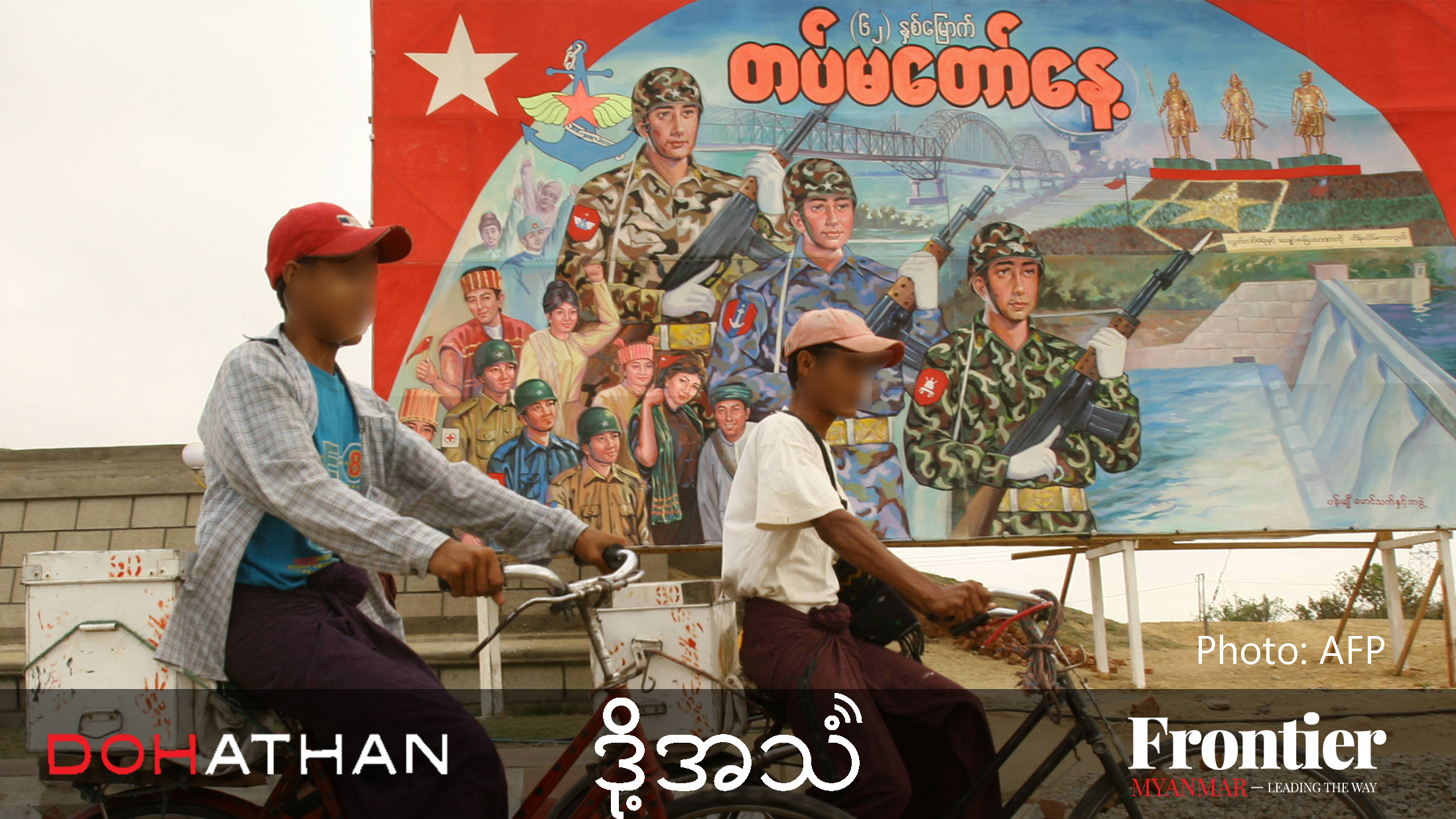The fighting in Kachin State is widely regarded as an attempt by the Tatmadaw to force the Kachin Independence Army to sign on to the Nationwide Ceasefire Agreement. But there’s another reason.
By SITHU AUNG MYINT | FRONTIER
RECENT FIGHTING in Kachin State between the Tatmadaw and the Kachin Independence Army has prompted thousands of people to rally in the state capital, Myitkyina, and call for an end to hostilities.
In eastern Shan State, tensions have risen sharply between the United Wa State Army, one of the country’s biggest armed ethnic groups, and the Mongla-based National Democratic Alliance Army. In southern Shan State, fighting in Mongkaing Township between the Tatmadaw and the Restoration Council of Shan State/Shan State Army-South has displaced about 1,000 villagers. In Kayin State, up to 4,000 villagers have fled their homes in Hlaingbwe Township because of clashes between a Border Guard Force and the Tatmadaw and a splinter group from the Democratic Karen Benevolent Army.
Some analysts regard the fighting as a continuation of Tatmadaw offensives against armed ethnic groups. However, U Tun Zaw, a leader of the United Nationalities Federal Council, said the Tatmadaw’s objective is to force non-signatories of the so-called Nationwide Ceasefire Accord to sign the agreement. I would like to explore the reasons for the fighting.
The KIA and the Tatmadaw have been fighting in Kachin State, and sometimes in northern Shan State, since a 17-year ceasefire collapsed in June 2011, a few months after the quasi-civilian Union Solidarity and Development Party government took office.
The fighting, ranging from fierce battles to smaller skirmishes, has been almost continuous. Reports of the fighting suggest that the Tatmadaw often launches heavy artillery attacks on KIA bases ahead of their seizure as part of a strategy to bring more territory under government control. KIA tactics include ambushing Tatmadaw convoys, throwing grenades into police stations and using bombs to destroy bridges.
Some believe the Tatmadaw is maintaining pressure on the KIA to force it to sign the NCA. However, in neighbouring Shan, the Tatmadaw has been engaging in skirmishes with the RCSS/SSA-S, one of the eight groups that signed the NCA in October 2015. It may not be correct to assume that Tatmadaw offensives against the KIA are aimed at forcing it to sign the NCA.
The main reason for the continued fighting between the KIA and the Tatmadaw is the absence of separate, mutual ceasefire agreements between the KIA and the Tatmadaw and the Kachin Independence Organisation and the government. The fighting has nothing to do with the NCA.
The KIO, the political wing of the KIA, launched its armed revolution in 1961 and fought the government until it signed a bilateral ceasefire with the then State Law and Order Restoration Council junta in 1994. The junta made no attempt to negotiate a political solution in Kachin.
In April 2009 the junta unveiled plans to establish Border Guard Forces of ethnic armed groups under Tatmadaw command in a move aimed at ending civil conflict before the 2010 elections. When the junta began pressuring armed ethnic groups to form the BGFs, the relationship between the KIO and the Tatmadaw soured.
The resumption of hostilities in 2011 occurred because the KIO rejected the Tatmadaw’s plan to turn the KIA into a BGF.
Meanwhile, the USDP government of President U Thein Sein, a former general, was launching the process aimed at achieving a national ceasefire accord that was to be followed by political dialogue. The peace process began with a series of bilateral ceasefires between the government and armed ethnic groups. The government sought to negotiate another bilateral ceasefire with the KIO, but it was not interested. It wanted more than a truce.
The KIO said the ceasefire it had signed with the junta in February 1994 had not benefitted Kachin State because it had not led to political dialogue. The fighting, it said, was the result of a political problem and hostilities would not end until it was resolved. This was why the KIO decided against making a new ceasefire agreement with the government.
As there has been hostilities with groups that have signed the NCA, it should be no surprise that there has been fighting with groups that are not signatories to the agreement.
The Tatmadaw is not heavily involved in the recent fighting in Kayin. It is mainly between rival Karen groups, a BGF and a splinter group from the DKBA.
In Kachin and northern Shan, the fighting betweည်ကို စေလen the KIA and the Tatmadaw is occurring because they do not have a bilateral ceasefire agreement. In the absence of such an agreement, the fighting will continue.







